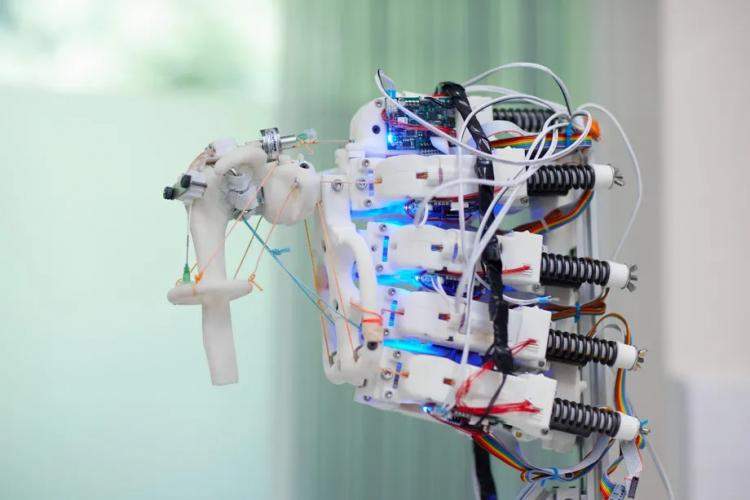For regenerative medicine, cells are often grown in static environments such as Petri dishes or miniature 3D frames. Some past experiments have shown that cells can be cultured on structures that act like hinges, but in this case the stretching and/or bending of the tissues occurs in only one direction.
New development of scientists
Researchers and robot developer at Oxford University – company Devanthrosuggested that in order to create a replacement for the actual damaged tissue, it must be grown in conditions close to those in which it “works” in which real muscles are deformed in all directions.
An interdisciplinary development team decided to recreate the musculoskeletal system as accurately as possible using a robotic skeleton. As a result, they used a skeletal model developed by Devanthro engineers along with a nutrient medium for the cells. It can integrate into the artificial bone structure and flex/bend in any direction.


Living tissues in a robotic skeleton / Fisher Studios
In this case, it is a question of working with the shoulder joint. In the structure of the artificial arm, the addition of a spherical outer membrane with biodegradable fibers stretched between the “fixing points” of the bioreactor is envisaged.
The fibers were “born” by human cells and the chamber was filled with a nutrient-rich solution. For two weeks the cells were grown in a nutrient medium exposed to daily “loads” – 30 minutes per day, the bioreactor was placed in the shoulder structure for loads and deformations.
While the scientists were able to note changes in the “trained cells” compared to the control samples, it is not known whether this would have any benefit. According to scientists, they only indicate probability.
In other words, the team has demonstrated that it is possible to grow cells in a robotic skeletal structure, and now they must determine if their efforts are worth the effort. However, the researchers are optimistic and suggest that in the future, thanks to detailed scans of patients, it will be possible to create replicas of the human skeletal system, which will create for them the optimal replacement of tissues such as damaged tendons.















